Stop seagulls, pigeons and other birds hanging out
or nesting on your roof

Article Summary:
Having birds perch and rest on our roof seems to be a common issue faced by most homeowners. Unfortunately, birds aren't always the beautiful, welcomed visitor you may think. Not only are the birds tiresome, and they leave a trail of bird droppings in their wake. They can also damage the integrity of your roof. Their acidic faeces can cause further issues to your roof the longer you leave it, including causing your roof to deteriorate and encouraging the growth of moss and algae.
This blog will talk about how to stop birds nesting in your roof, how to keep birds away from the roof, and the best type of bird deterrent to use. You can learn more about the damage that is caused by nesting birds here.
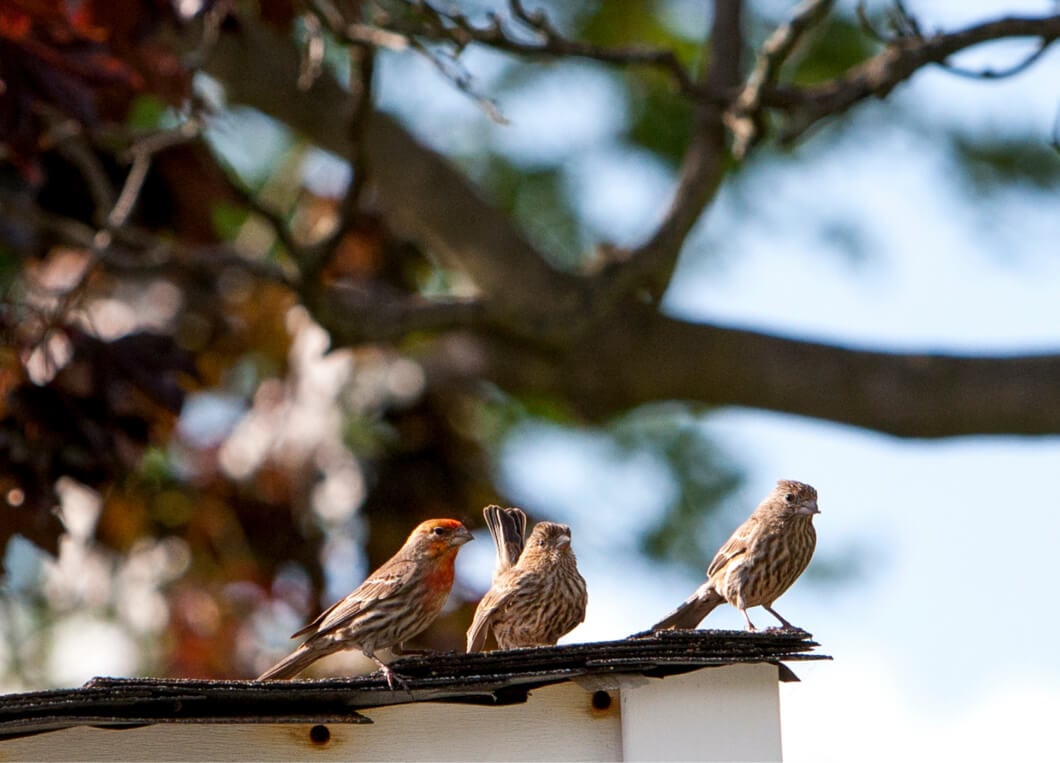
Installing Deterrents
One way to help prevent birds from nesting, resting and landing on your roof is by installing a deterrent. Birds have evolved with an acute sense of predators, learning how to protect themselves from danger. A deterrent taps into those natural bird senses and can be an easy way of helping to keep birds away from your roof. Installing a predator onto the roofs of your building can be an effective way to deter birds.
To ensure you have the right deterrent for your bird, be sure to identify what species of bird regularly visit your roof. A deterrent that may work for swallows, and sparrows, may not work for pigeons. If you have a seagull problem, learning how to scare seagulls from roof and getting rid of seagulls on roof is the first step in keeping birds away from roof. Then find out how to scare seagulls from your roof using the correct visual deterrent.
Visual Deterrents
Like the one below, Owl decoys are used when scaring away pigeons, crows, seagulls, and sparrows. At the same time, ravens are used for magpies, sparrows and other smaller birds. While visual bird deterrents may work for a while, birds can quickly learn that the decoy isn't real. Purchasing a deterrent that has reflective eyes can appear more real to birds. However, this, unfortunately, is only a temporary prevention solution, as birds will learn that the decoy is fake. One way to help create a deterrent that can appear real to birds is to purchase one with moving parts, moving heads of wings, or you can move the deterrent every few days. (Not the most practical of solutions) but this prevents the birds from getting used to the position of the fake predator.
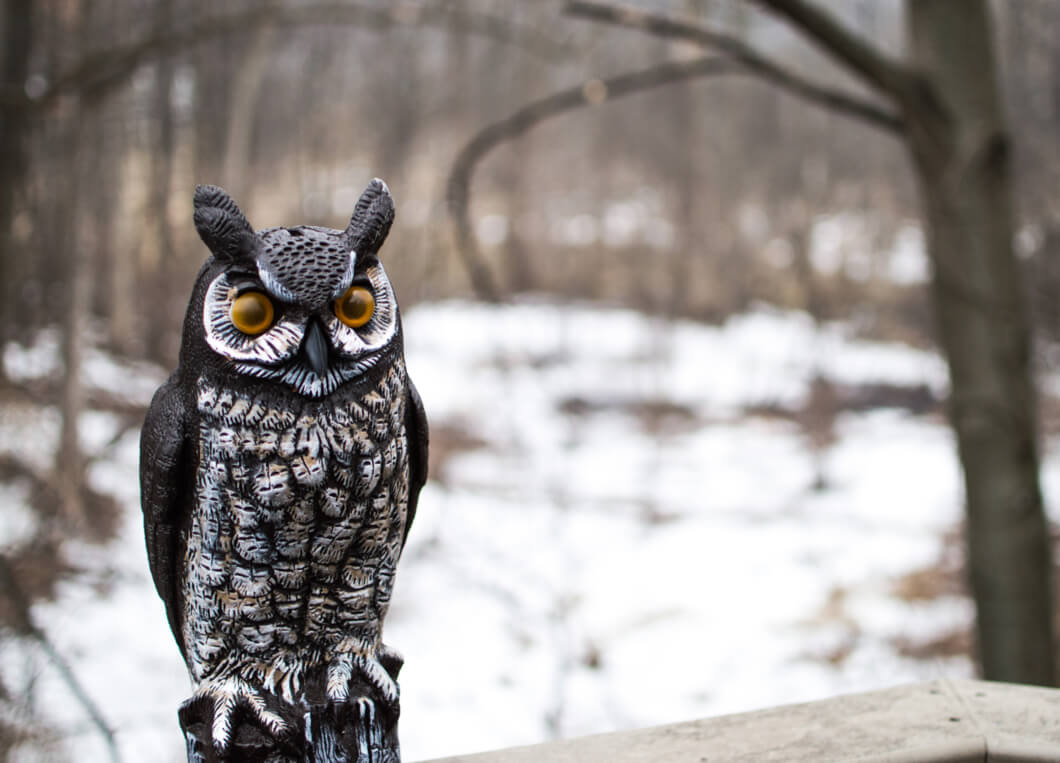
There are both audio and visual versions of deterrents. An audio deterrent can be either an ultrasonic device or a speaker that emits repellent sounds to birds. The ultrasonic speakers can either emit a high-frequency noise to act as an irritant to birds, or the speaker can play predator calls and distress noises, signalling to other birds to avoid your roof. Like the visual decoy, an ultrasonic device will prove highly effective for a while, but birds will become wise to the audio over time. These devices are specifically designed for birds and should not bother dogs, cats or other animals.
While adding a pigeon scarer for your roof may seem like a great bird decoy solution for your pigeon problems, these bird deterrents solutions may not be long-lasting once installed.
Getting Rid of Their Perches
Birds will only perch on a roof or structure that is comfortable to perch and nest on. Another form of bird deterrent is to get rid of their comfort. Birds will often perch to test out a potential nesting site. The last thing you want is for birds to begin nesting in your eaves or roofs. The below is a method to prevent birds from perching on your property.
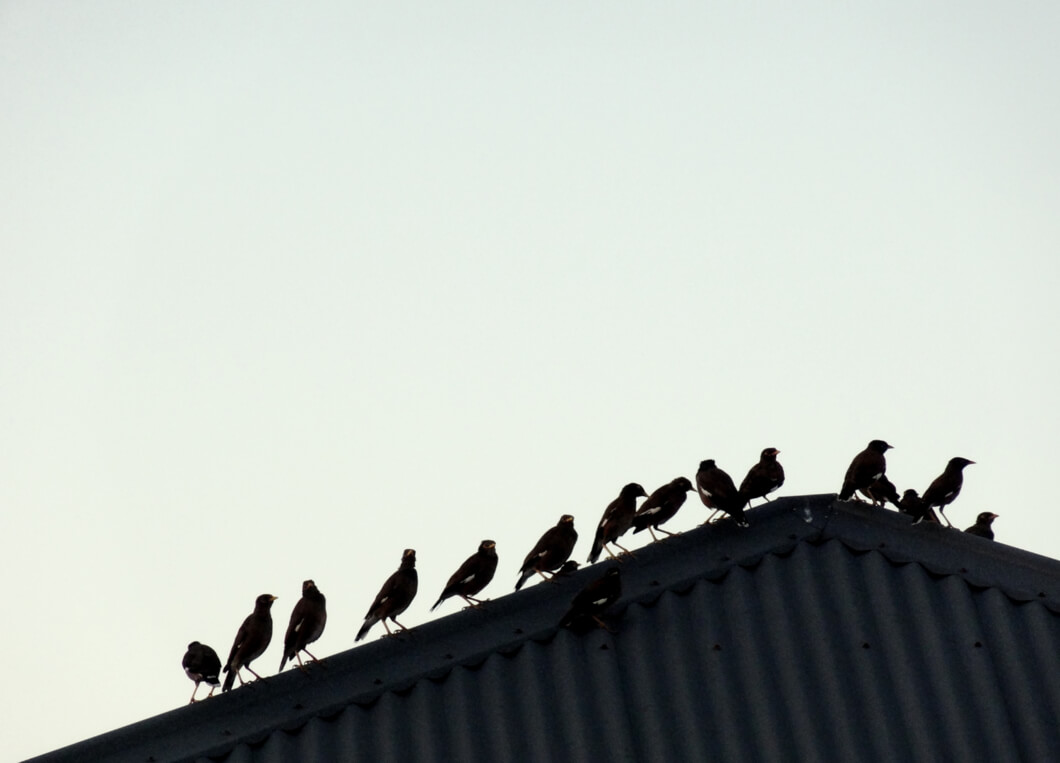
PIGEON SPIKES: WINDOW SILLS, GUTTERS, AND ROOF RIDGES
Pigeon spikes, otherwise known as anti-roosting spikes, cover the surface of your window sills, gutters, and ridges preventing wildlife from resting where they have been installed. While the above deterrent method is designed to scare away unwanted guests, the spike prevents birds from landing on your house. Bird spikes are a strip of metal that can be installed in any area of your home. The strip of metal has small spikes protruding from it. These bird spikes do not harm or injure any birds; they alert the roof bird that there is something in the way of them perching on the roof.
Pigeon spikes are considered the most effective bird is roosting preventative as they often successfully stop birds nesting on the roof when used correctly.
Installing these bird spikes on the edges of your roof as well as on your window sills and gutters will help deter species of birds that like to perch on the edge of something high to survey the surrounding area. When birds fly down to perch on your roof, they will either see or feel the spikes and realise they cannot roost comfortably on your roof and will seek roosting spots elsewhere.
Another benefit of adding pigeon spikes to your building isn't just how to keep birds away from the roof, but also due to the widths, they should not be visible on your roof from the ground. Unlike the above visual and audio preventions methods, stainless steel spikes are long-lasting and effective, with little maintenance. However, depending on the surface your wish to cover, this option could be a pricey pest control solution.
Alternatives to bird spike strips are using a bird spider. These are good at keeping seagulls off a flat roof or other birds off of perch spots. The spider has a series of long, bent wires that come out of one central spike secured to your roof. The spider wires bend and cover the perch like a fan, making it impossible for birds to land in the first place.
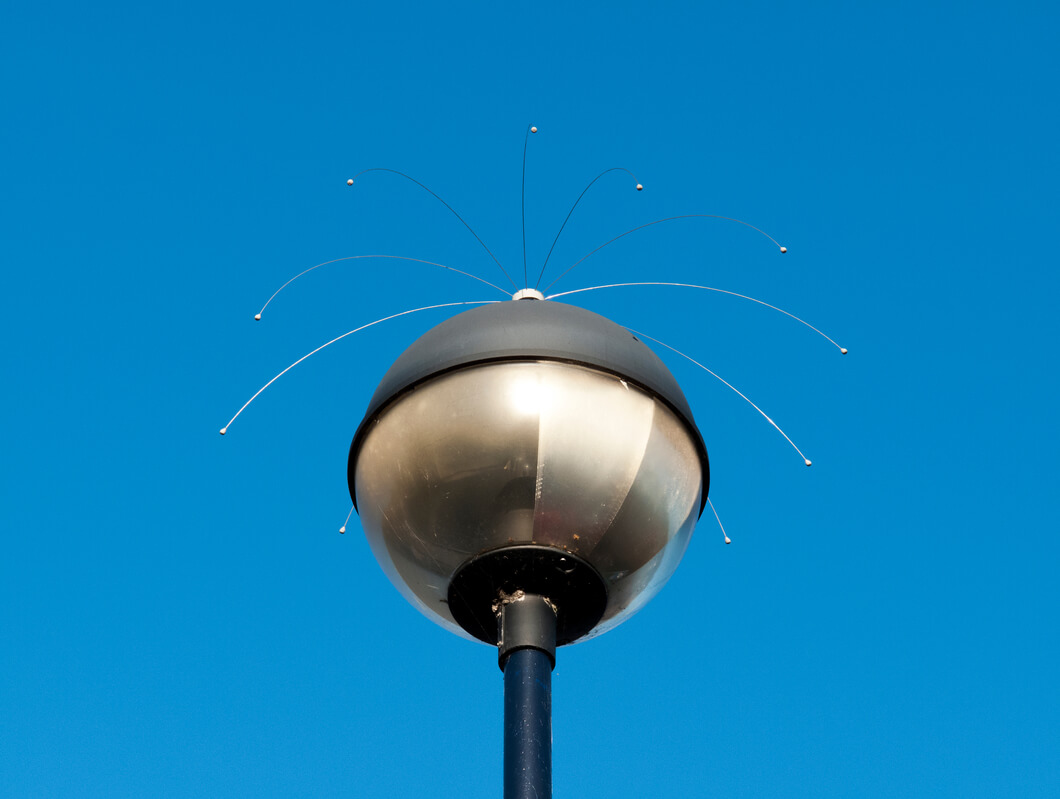
GULLWING: INSTALL ROOFING SEAGULL WIRE
Another method of how to get rid of pigeons from roof and how to get rid of seagulls on the roof is seagull wire.
Seagull wire, otherwise known as bird wire or pigeon wire is an effective way to stop birds nesting on the roof. Especially for roofs where the pest as mentioned above, control solutions have not worked in places where large amounts of space need to be protected and covered.
Seagull wire or bird wire is used to prevent seagulls and other birds from roosting or perching on your building. This post and wire system creates an almost invisible tension wire across ledges, ridges, or other narrow building features. The stretched wire prevents birds from using your ledge as access to prey or nests, as the wire does not give pigeons or other bird species the support they prefer when landing.
Bird wires are usually installed in rows of three, making it difficult for birds to land and move around your roof or building easily.
To install your Bird wire, each wire requires a stable surface mount. Fitted to your roof. Run a short amount of wire from your anchor point to the top of your first post. Then if you are installing wire for seagulls, be sure to leave a gap of 150mm between the edge of your roof and your first post. Then install your next post from 1.5m to 3m space from your first post. Continue placing your posts along the length of your roof evenly spaced apart. Measure and cut your wire longer than the space between your posts. See how to install your seagull wire here.
Adding seagull wire to your outside space is a great way of helping to prevent seagulls from landing on your roof, as the large birds should not be able to rest on your roof, as the tension wire should cover the entity of your building, helping to control the pest.
Protect Your Flat Roof With Netting
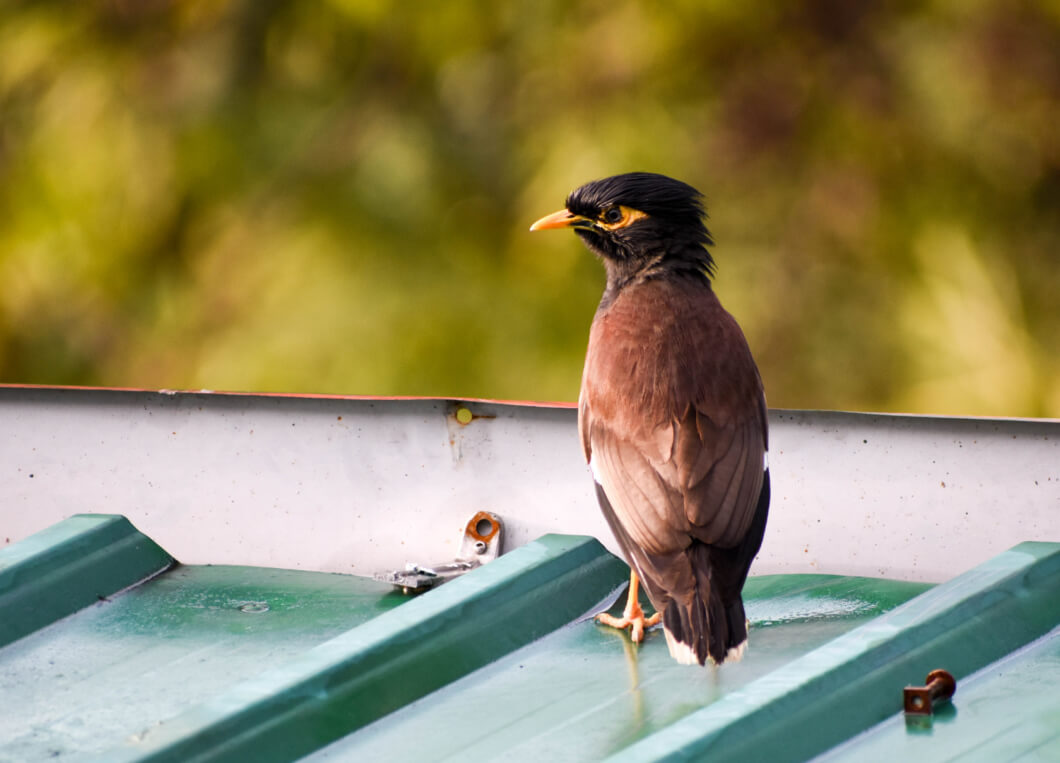
Use wires, spikes or predator style deterrents may not work at keeping birds away from your roof if it is a flat roof. In these instances, bird netting can be applied to your roof. Bird netting can be used in situations where an entire flock of birds are roosting on your roof.
Bird netting can be installed onto the top of your roof to help get rid of these winged pests. Unlike visual decoys, sound decoys, spikes and wires, nets can be installed to easily over the entirety of your roof, shielding your roof from pigeons, swallows, seagulls and other birds.
This solution can be installed across areas of your roof, such as chimneys, and can be fitted easily across any protruding edges or awkward shapes.
The bird netting method works as it gives your building a similar feel to the above bird wire, deterring birds from landing on your roof by making the surface seem insecure and unappealing.
While this can be a cheaper repellent solution than spikes or wire, bird netting can be visible from the ground.
Removing Reasons for Nesting
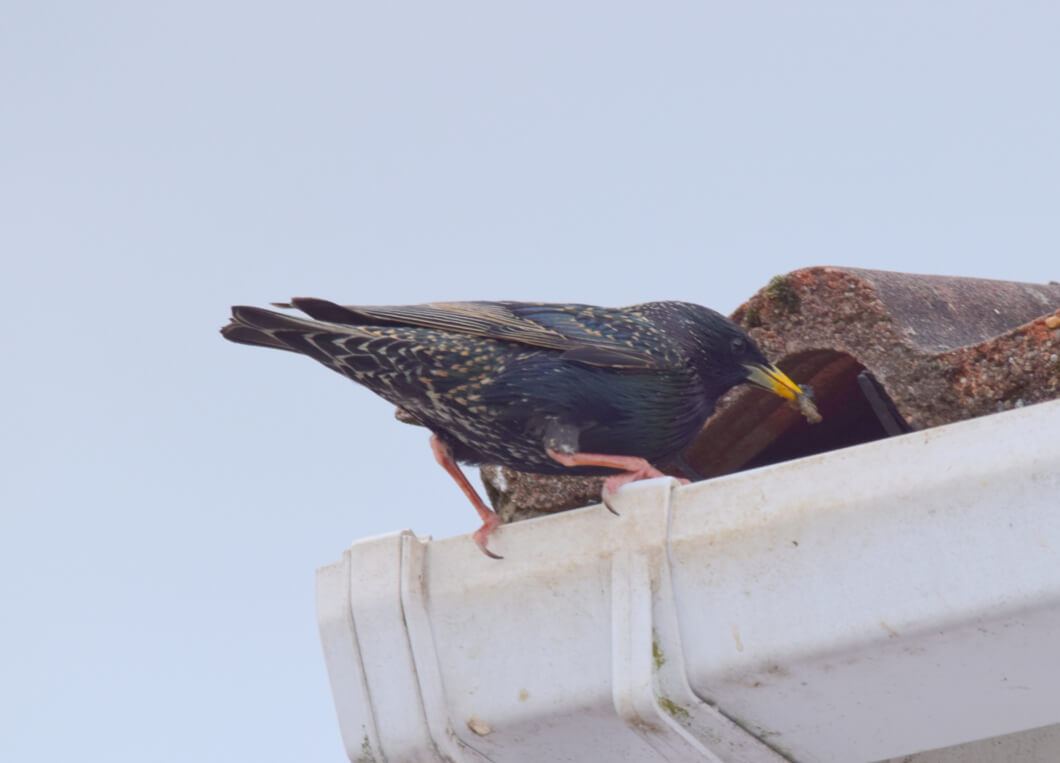
The above methods are ways you can help stop birds nesting in roof, but how to stop seagulls nesting on roof or other birds from nesting on your roof when they've already built their nest?
There are several reasons why you would want to remove the opportunity of bird nests from your property. The materials that birds make their homes from can clog up your gutters and drain, leading to a build-up in moisture, causing more issues than it's worth. Birds often nest in gutterings, on chimney tops, your roof alcoves, holes and beneath your Flashings. The materials birds use to create their homes, such as leaves, feathers, discarded mesh and debris, can be built upon your roof and prevent water runoff.
Prevent birds from nesting by removing any reasons birds may have for staying, such as:
- Materials and existing nests -Clear out any nesting areas present in your roof by removing the materials from your building.*
- To help prevent birds from nesting in the holes and spaces within your roof, you can fix or cover these gaps.
- Birds choose nesting sites with nearby access to food, water, and an area that gives good visibility and protection from predators. Removing food sources, water or encouraging the presence of a predator (can be a real one, such as a trained owl or eagle or a fake deterrent, as mentioned above) should discourage birds from choosing your building as a nesting spot.
- Remove food sources - if you often put food out for birds, leave your bins open, or spill food in your garden, it can encourage birds to stay.
- Make surrounding plants and berries taste and smell bad to birds. Spray nearby plants with eco-friendly methyl anthranilate. Ensure you purchase an approved solution from an approved pest control shop or professional and follow the manufacturer's instructions. Spray a light coating over your plants, and this will remove a major food source for the birds but should not affect the food for human consumption.
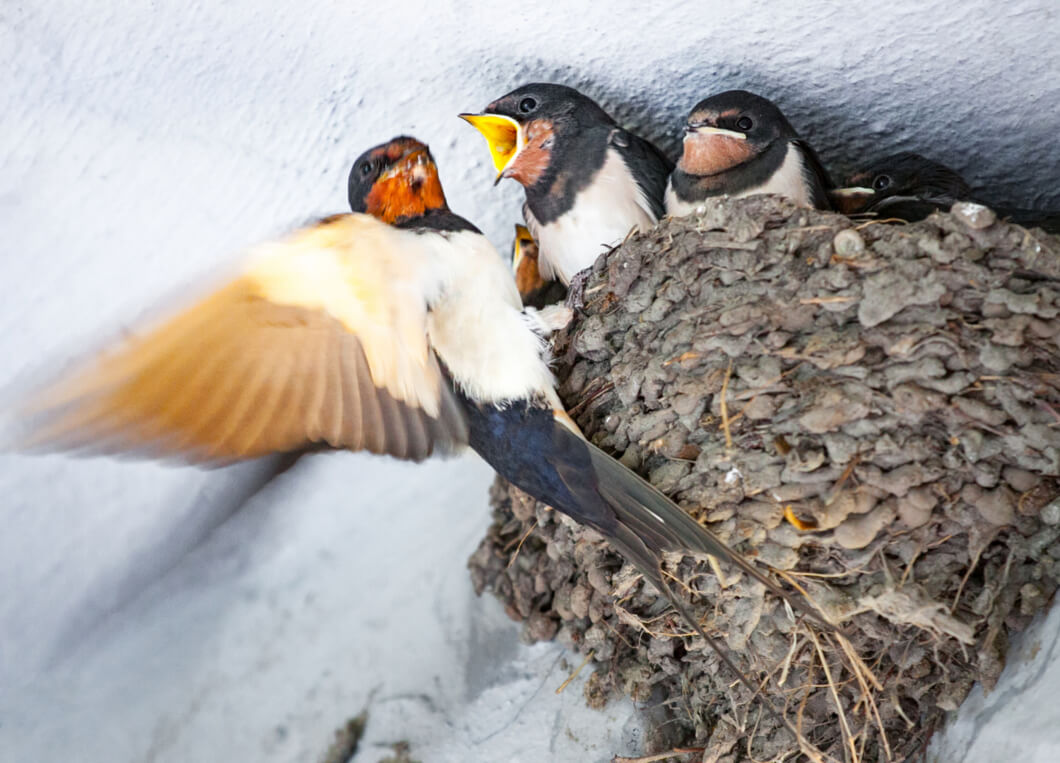
*Before you go about removing a birds nest from your roof, you must first check if the nest is protected. By law, all birds nests are protected, and intentionally destroying or disturbing an active bird nest is punishable by law. If you must remove a nest from your building, this must be carried out whilst the nest is not in use, and a temporary nest must be made available nearby in the meantime. You can find out more about how to remove birds nests in our blog here.
Conclusion
Installing the bird control methods mentioned above when you install your Roofing Sheets in the first place can save you a lot of time and hassle and figuring out how to keep birds away from roof sheets when it is potentially too late. Bird droppings, nesting materials and dropped food can cause a range of issues for your roof and could cost you a lot of time and money in future repairs.
If you are looking to replace or repair your Roofing Sheets, we at Cladco Profiles offer a wide range of Roofing Sheets in four attractive Profiles and a range of colours and coating.

See our range of Roofing on our website, by ordering a sample, or by giving our friendly sales team a call on 01837 659901.

